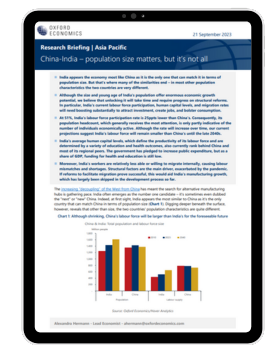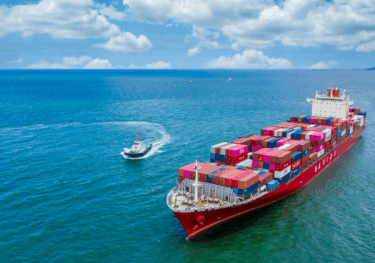China-India: population size matters, but it’s not all

India appears the economy most like China as it is the only one that can match it in terms of population size. But that’s where many of the similarities end – in most other population characteristics the two countries are very different.
This is the first piece in our series of Research Briefings comparing the Chinese and Indian economies. Click here to read the second piece.
What you will learn:
- Although the size and young age of India’s population offer enormous economic growth potential, we believe that unlocking it will take time and require progress on structural reforms.
- At 51%, India’s labour force participation rate is 25ppts lower than China’s. Consequently, its population headcount is only partly indicative of the number of individuals economically active.
- India’s average human capital levels also currently rank behind China and most of its regional peers.
- India’s workers are relatively less able or willing to migrate internally, causing labour mismatches and shortages. If reforms to facilitate migration prove successful, this would aid India’s manufacturing growth.
Tags:
Related Posts

Post
Five lessons for businesses navigating tariffs and trade turmoil
In a rapidly evolving global trade environment, businesses must stay ahead of changing tariffs and regulatory demands. Our latest blog offers practical guidance on navigating tariffs, understanding key trade strategies, and leveraging accurate HS code classifications to optimize your supply chain. Explore essential insights that will help your business manage trade uncertainty, ensure compliance, and unlock new growth opportunities.
Find Out More
Post
The Future of Trade: Tariffs, Taxes, and Economic Trends
Amid ongoing global trade uncertainty, business leaders are struggling to plan ahead as new tariffs continue to reshape the market. Even so-called “locked-in” tariffs are proving to be temporary, adding to the unpredictability. Firms are cautious, waiting for clarity before committing to major investments. As global trade volumes decline, the importance of understanding every relevant trade tariff and accurately applying the correct HS code to imported goods becomes even more critical for managing costs and compliance.
Find Out More
Post
Tariffs 101: What are they and how do they work?
Tariffs are taxes imposed by a government on goods and services imported from other countries. Think of tariff like an extra cost added to foreign products when they enter the country. They’re usually a percentage of the price of the goods, making imported items more expensive compared to domestically produced good
Find Out More